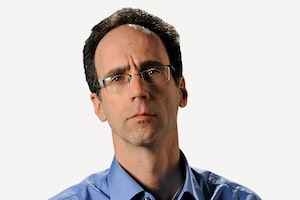The federal Liberal government has been naming women to the bench at an unprecedented rate this year, with nearly three women chosen for each man, government figures show. Of 37 judges named to federally appointed courts in 2018, 27 are women.
The boost in the appointment rate of women has been helped along by historic levels of female applicants, who make up 45 per cent of the 1,169 applicants since the Liberals established a new appointment process in October, 2016, according to the Office of the Commissioner for Federal Judicial Affairs, which collects data on the process. That’s up from 30 per cent during the 10 years the Conservatives were in power. (Federally appointed courts include the superior courts of provinces, the Federal Court, Tax Court and the Supreme Court of Canada.)
The rapid rate of female appointments still leaves the bench well short of gender parity. The 866 full-time positions are now 39.6 per cent women, up from 36.6 per cent when the Liberals took office in November, 2015, according to figures supplied at the request of The Globe and Mail.
The government has put into effect its stated policy of having a 50-50 gender split in Cabinet. But it has never publicly stated a target for the appointment of women to the judiciary.
If it has set numerical targets for achieving a 50-50 split, it is not saying.
“All judicial appointments are made on the basis of merit, taking into account the needs of the court,” Dave Taylor, a spokesman for Justice Minister Jody Wilson-Raybould, said in an e-mail. “As we move forward, we are confident that our Government’s goal of a balanced, meritorious and diverse bench will be realized.”
Members of the legal community interviewed for this story said they believe the Liberals are stepping up efforts to bring about gender parity on the bench. Several lawyers said they welcome that effort. “As a middle-aged white guy, I’m not concerned about what might be interpreted as a disproportionate number of women who are appointed to the bench,” Halifax privacy lawyer David Fraser said in an interview. “If it takes a little bit of corrective action to get us close to a properly representative judiciary, I think it’s fine.”
During the Conservatives’ period in office, from 2006 to 2015, women made up 30 per cent of judicial appointments. The Liberals made several changes to the appointment process in 2016, including asking applicants to fill out questionnaires describing what equity and diversity mean to them. And for the first time, they asked applicants their race, ethnicity, sexual orientation and disability status, promising to make the data public. (The judicial affairs office says it will make these more detailed figures for the second year of Liberal appointments under this process public in October. Several of the 2018 appointees are members of racial minority groups.)
The appointment process has two main stages. Applicants are screened by one of 17 judicial advisory committees made up of federal and other representatives. Then the government chooses from the list of candidates recommended or highly recommended by the committees.
Some lawyers stressed the importance of merit in judicial appointments. “I certainly support gender equity but the overriding factor has to be choosing the best candidates, as far as I’m concerned,” Andrew Rouse, a litigator in Fredericton, said in an interview.
Heather Treacy, a lawyer in Calgary, said she applauds the trend “provided it is balanced with ensuring top-quality candidates are appointed. This is less of a current concern given the increased numbers of very able females engaged in the legal profession.”
Others offered unqualified praise. “I think it’s terrific movement in the right direction,” said Brian Facey, who practices competition law in Toronto.
Rosemary Cairns Way, who teaches law at the University of Ottawa and monitors diversity in judicial appointments, said the jump in the overall proportion of women on the bench is noteworthy. It “demonstrates that achieving gender parity requires action (as opposed to faith in a ‘trickle-up’ process),” she said in an e-mail.
As for the greater proportion of women applying for the federal bench, she said, “I suspect it is because potential women applicants are more confident that the skills, experience, and expertise they present are more likely to be valued.”
 Sean Fine
Sean Fine